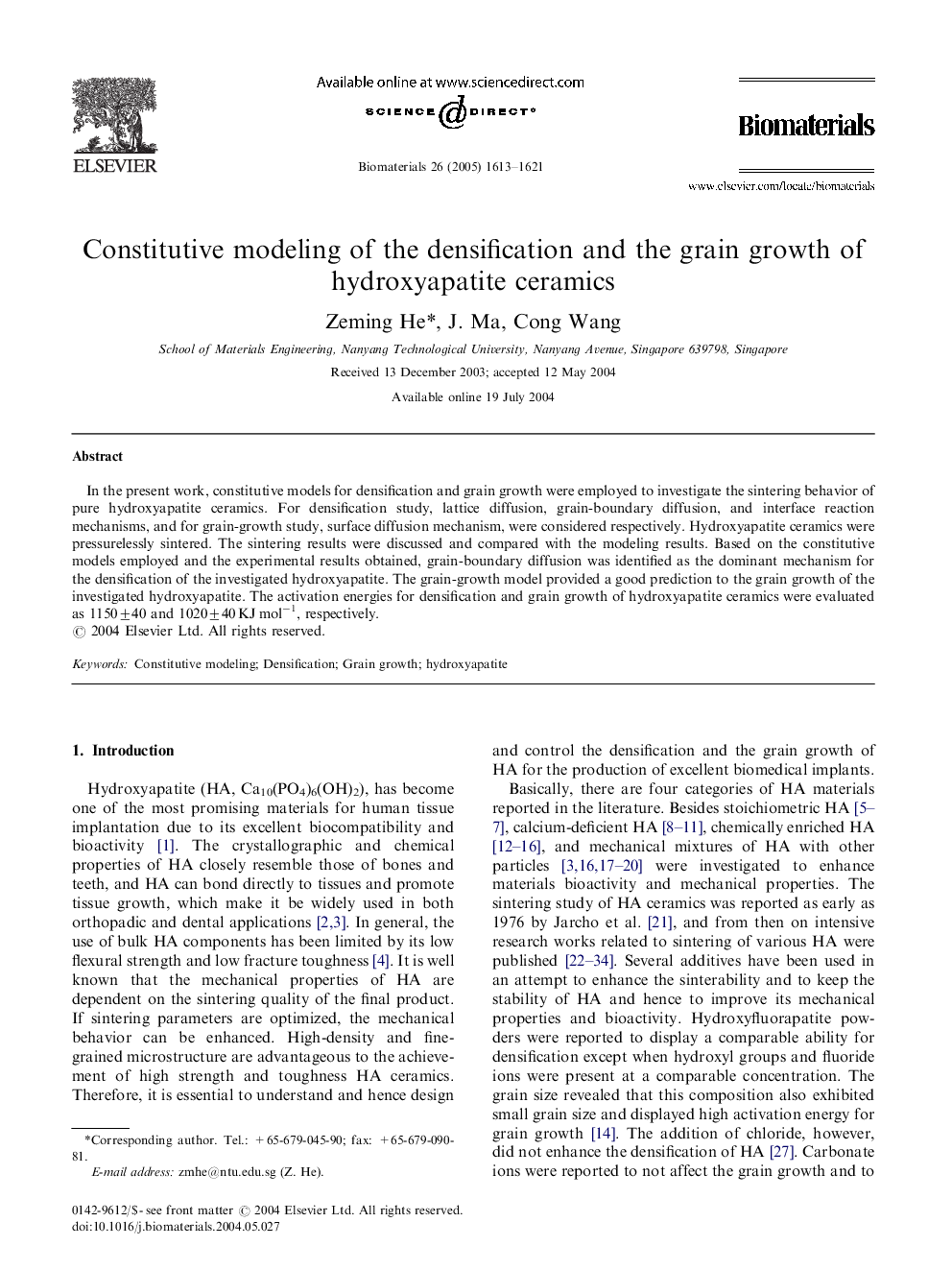| Article ID | Journal | Published Year | Pages | File Type |
|---|---|---|---|---|
| 12353 | Biomaterials | 2005 | 9 Pages |
In the present work, constitutive models for densification and grain growth were employed to investigate the sintering behavior of pure hydroxyapatite ceramics. For densification study, lattice diffusion, grain-boundary diffusion, and interface reaction mechanisms, and for grain-growth study, surface diffusion mechanism, were considered respectively. Hydroxyapatite ceramics were pressurelessly sintered. The sintering results were discussed and compared with the modeling results. Based on the constitutive models employed and the experimental results obtained, grain-boundary diffusion was identified as the dominant mechanism for the densification of the investigated hydroxyapatite. The grain-growth model provided a good prediction to the grain growth of the investigated hydroxyapatite. The activation energies for densification and grain growth of hydroxyapatite ceramics were evaluated as 1150±40 and 1020±40 KJ mol−1, respectively.
